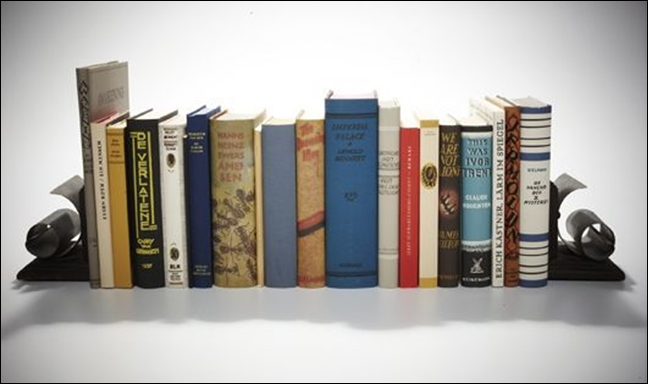Story: An Exhibition Curated by Elyse Goldberg
Story from September 9 through October 9, 1999 @ A/C Projects Space, 453 West 17th Street, 645-4970.
A reemergence of narrative content in art is examined through the work of eleven artists in Story, an exhibition curated by Elyse Goldberg. The interaction between visual art, literature, fables, and cinema is particularly interesting and precipitates imagery replete with associations and allusions. Personal narrative and the interpretation of memories, however unusual or commonplace, are another genre of story represented in the exhibition. Through a broad gamut of media, artists elucidate, ironize upon, complicate, digress from, and otherwise interpret stories with images.

What might be referred to as a cinematic approach is evident in the work of Michael Ashkin and Zhang Huan. Ashkin has created a diorama with model cars that awkwardly inhabit a plywood armature. Huan exhibits Sunshine #1, a photograph that depicts a naked man, hunched over in the snow, who protectively clutches two plastic dolls. Both artists expose the artifice of storytelling. The viewer’s perception of an illusionistic microcosm of flatbed trucks making their way over a desert gives way to his understanding of the diorama’s construction. Likewise, Huan creates a tableau of human suffering in which the presence of plastic mannequins underscores its symbolic nature.
A more literary approach is taken by Fiona Banner, Barbara Bloom, and Allen Ruppersberg. Banner, who developed a body of work that was inspired by “Vietnam” movies exhibits Top Gun, a work on paper that documents her written response to the film. Banner’s notes become a fiction in their own right. Bloom, who recently developed an installation project out of Vladimir Nabokov drawings, notes, manuscripts, and editions, exhibits Playboy Magazine in Braille with Centerfold, in which Heffnerian womanhood becomes a landscape of sterile white protuberances. Ruppersberg, who once copied the entire text of Oscar Wilde’s Portrait of Dorian Gray longhand onto twenty-six canvases, exhibits Siste Viator (Stop Traveller) a grouping of twenty facsimile books. Through different means, these works facilitate a transformation of text into image that demystifies its content.
Maki Tamura reinterprets the Snow White fable with paintings that overtly eroticise a fairytale already charged with Freudian meaning. Ernesto Pujol exhibits photographs of men’s feet clad in shoes and socks which belong to a series in which feet and the daily ritual of dressing them acquire fetishistic value. Erotic memory colors seemingly innocuous subject matter in stories from this timely exhibition.
© Daniel Rothbart, 1999.